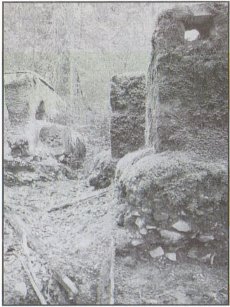GEO HUNTING
By Howard & Linda Banks
Reprinted from "Crown Jewels of the Wire", April 2004, page 20
Geo-cache hunting is a hobby enjoyed by many insulator collectors. Using
Global Positioning Technology (GPS), enthusiasts search for hidden caches
containing any variety of items. , Linda and I (using the moniker "Howl'n Banks) have started leaving insulators
behind, in the
prospect of starting new collectors among the "treasure
hunters" who come along after us.
The hobby has increased
so significantly that there are now hundreds of thousands caches hidden in the
United States. Many will be in your own neighborhood. We were surprised to find
a half dozen caches hidden within five miles of our home here in Merlin, Oregon!
To find out where to look, log onto www.geocaching.com. Global positioning
coordinates will be listed for each hidden cache, plus a generalized map and a
list of clues by whoever hid the cache. You will need a GPS device to find
actual caches.
To make geo-caching even more interesting for insulator collectors, Crown
Jewels this month initiates our own version of geo-caching. Listed on the next
page are the co-ordinates for a special interest site in Southern Oregon. But
this site isn't a cache of items hidden in the ground. No, your treasure is a
standing pole, complete with side pegs and a cross arm.
The goal of your search is a power pole placed in the ground in 1904 when the
Rogue River Electric Company extended a branch line to the Granite Hill Gold
Mine. The electricity operated a 150 horsepower electric motor that powered a 20
stamp mill used to grind gold ore into dust. Before the mine closed in 1908, the
American Goldfields Company reported $75,000 in gold was mined there (about
$1.8-million in today's economy).
This branch of the power line used M-2795's, the glass bottom / porcelain top
multipart insulators made by Fred M Locke. These insulators are called
"gutter tops" by collectors, because they actually have a gutter to
drain rain water away from the cross arm. Another collector and myself recovered
a half-dozen M-2795's in decent condition on this same branch line and very near
this location in the late 1960's. Telephone lines on side pegs contained smaller
Fred M Locke porcelain unipart insulators including U-39's, U-192A's, and U-611A's.
While the standing power pole you are looking for remains solid in the ground
100 years after it was installed, the cross arm 15 feet above your head likely
is not. Be careful not to bring debris down upon you.
When you find the pole you are on public lands managed by the Bureau of Land
Management. You can follow the line by pole stumps and / or downed poles for
approximately a mile up and around the mountain. The likelihood of finding any large power insulators is slim, as even broken fragments have
been picked up by collectors over the years. But people still find the smaller
insulators from time to time where they were discarded into the surrounding
brush.
The coordinates are as follows:
N 42 30.859
W 123 17.430
One way to get close is to take Interstate 5 exit #58 at Grants Pass, Oregon.
Proceed north on Granite Hill Road for 5.1 miles, turn onto a dirt road up
Morris Creek for 1/2 mile, and park at a junction. The pole is out of sight up a
nearby draw containing a seasonal stream. Words of caution: poison oak abounds.
In the summer, be aware of bees and rattlesnakes. Take drinking water. Due to
the hazards just described, I'd rate the hike as a "2" on a scale of
one to five, with five being the most difficult.

Overgrown by dense brush and timber,
only the foundations remain of the 20
stamp
mill once powered by electricity.
There is something to find at the site: we placed a CD 102 at the base of the
pole as a token reward. The greater reward is just seeing the pole construction
for a line built 100 years ago when the terrain lacked roads for easy access as
it does today.
Note: if you drove from Grants Pass as described above, you followed the
route of the line all five miles. However, clues are few and far between due to
construction and development.
This geo-cache site is not being advertised on the geocaching website. The
co-ordinates are only being revealed to readers of Crown Jewels, which assumes
no responsibility for any risks you take searching for the site or walking the
pole line. Enthusiasts of geo-caching are encouraged to contact us at Crown
Jewels, as we intend to reveal other historic lines to our readership via this
medium.
Sources:
Fred M. Locke, a Biography, by Elton N. Gish, Infinity Press, Buna, Texas,
1994.
Oregon Metal Mines Handbook, Josephine County, by F. W. Libbey, Director
of the Department of Geology and Mineral Industries, 1952.
Southern Oregon
Historical Society, Medford, Oregon.
| 